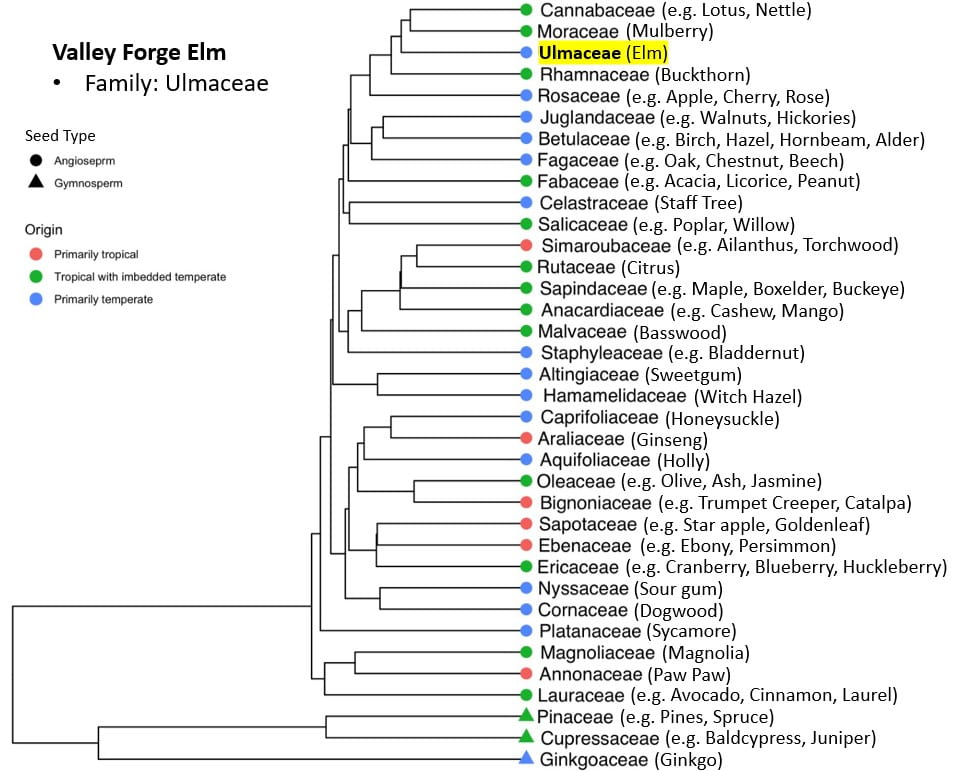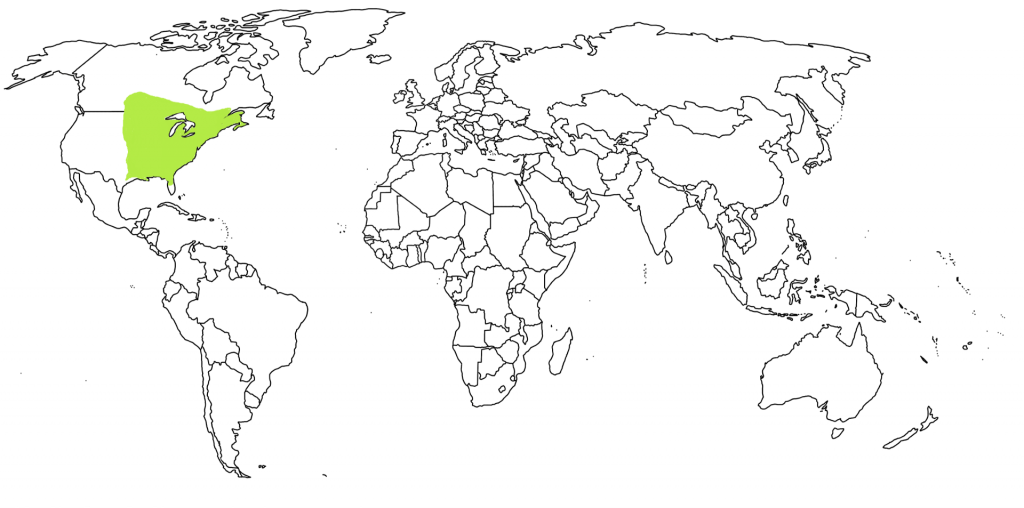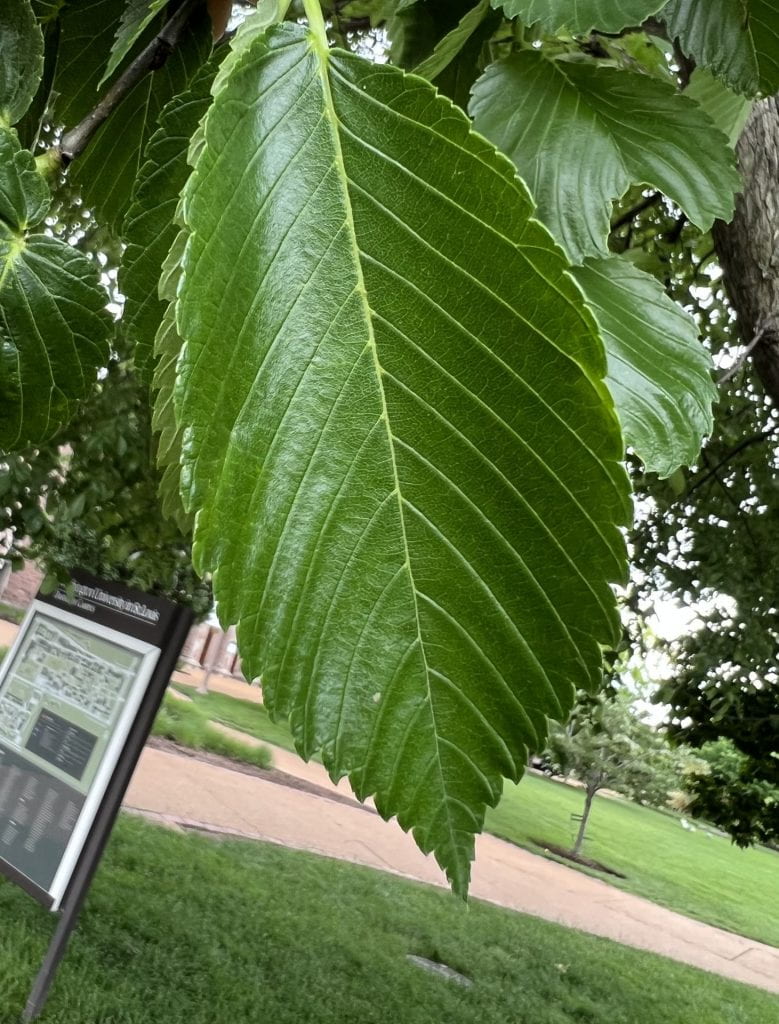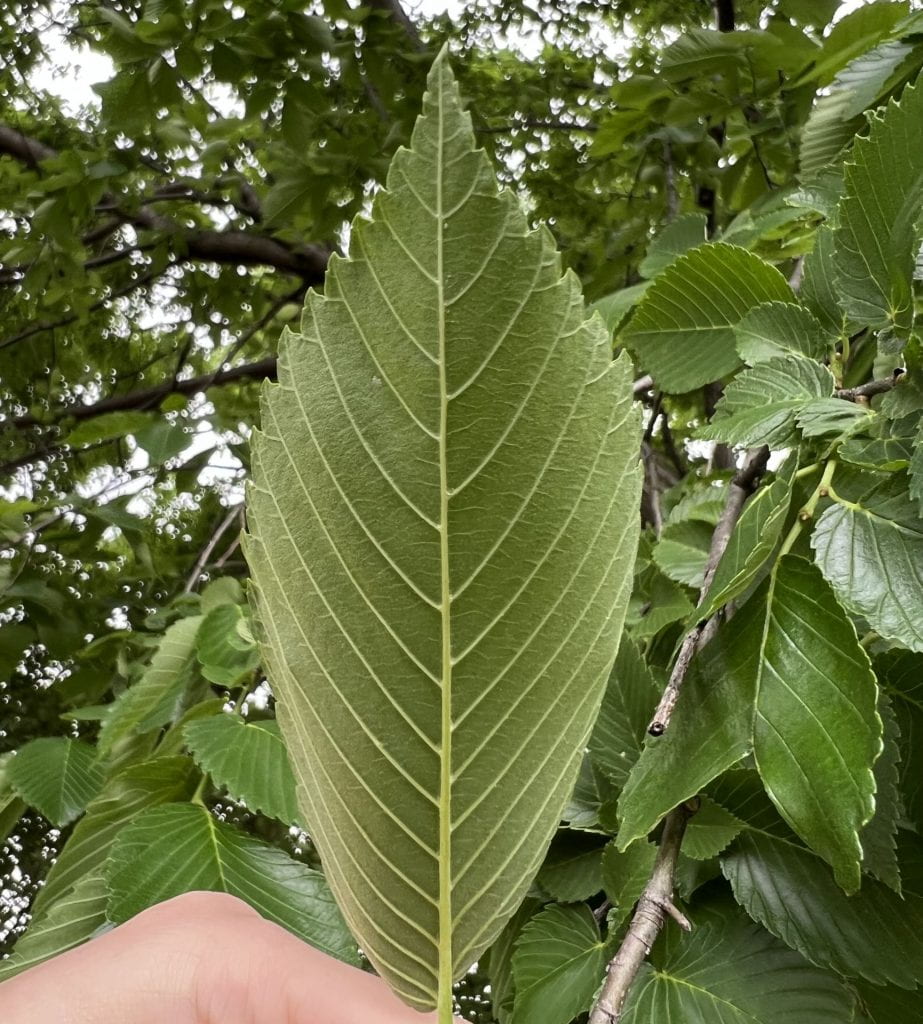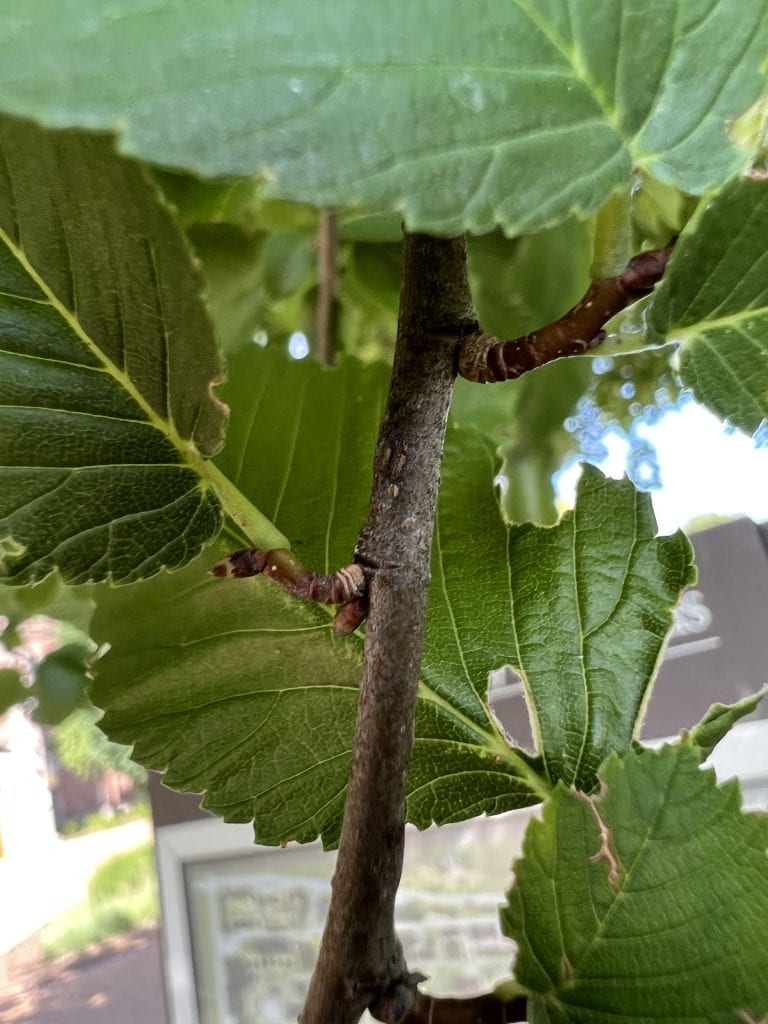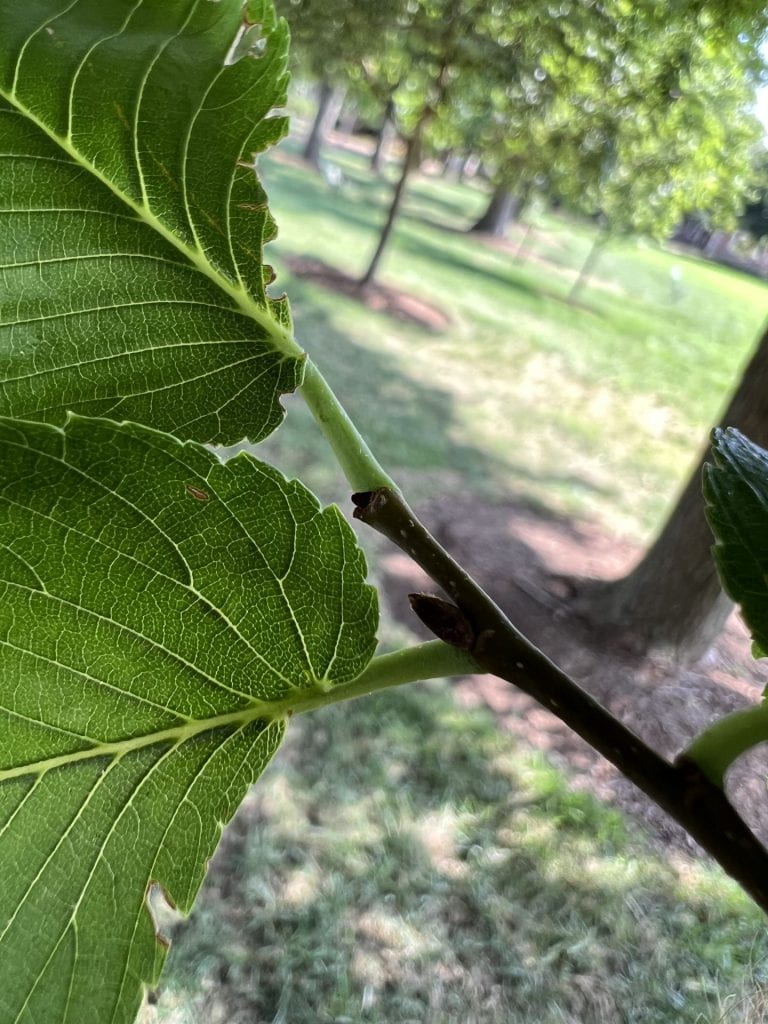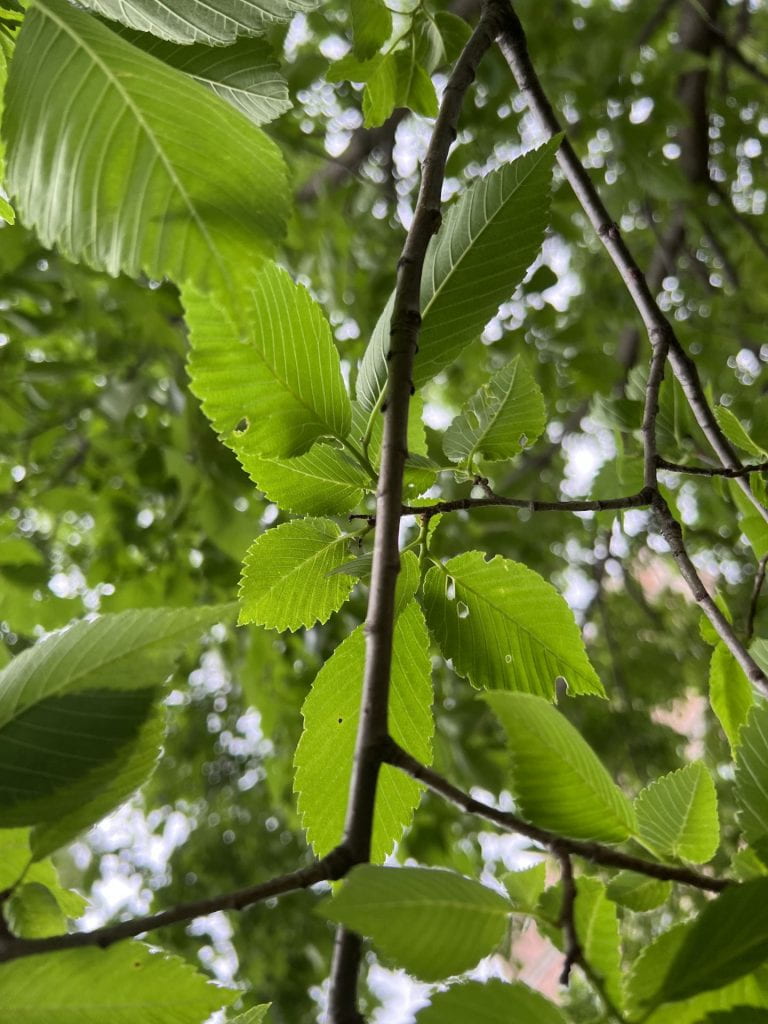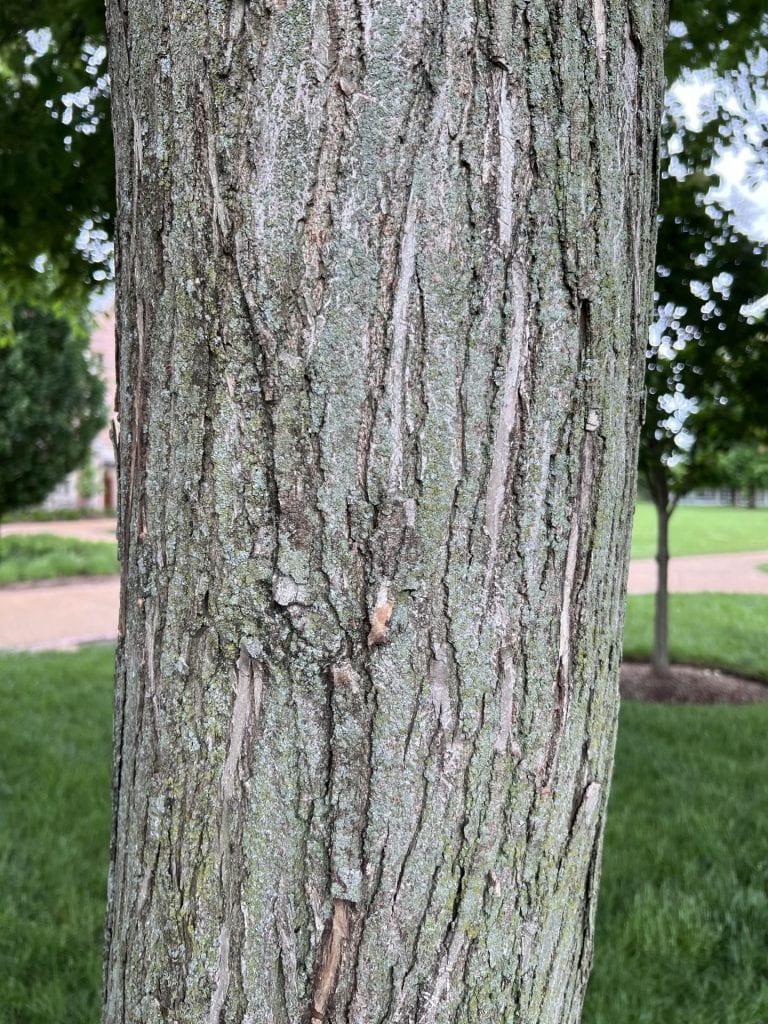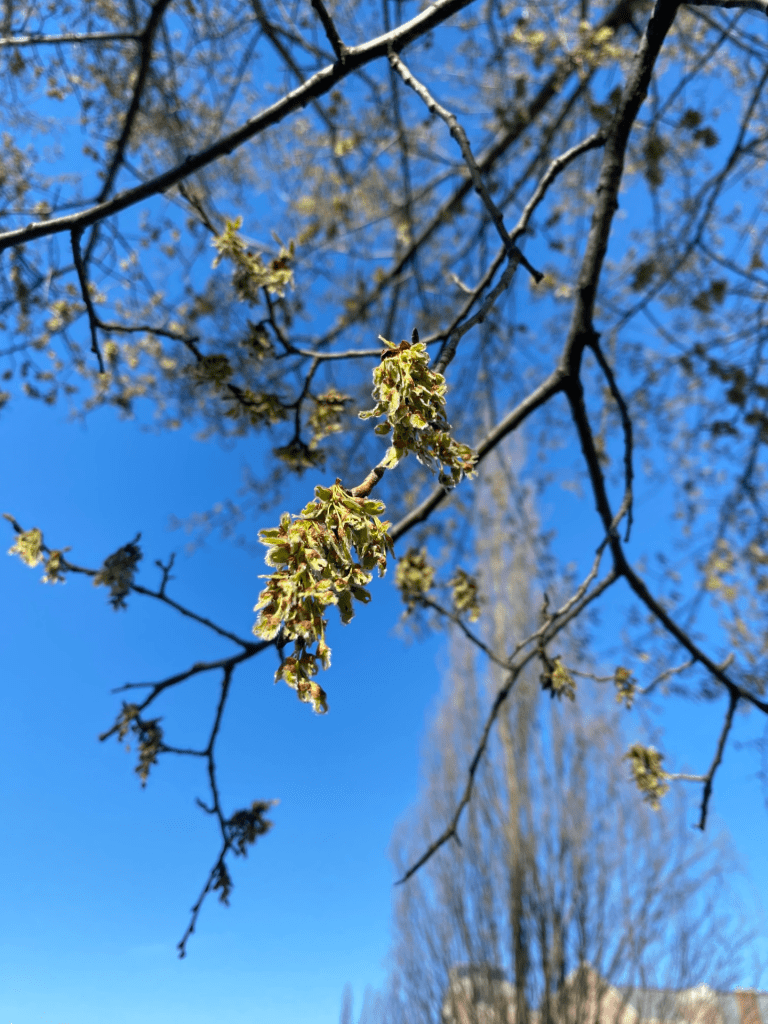American Elm
Arbor Walk #31, Treekeeper ID #2408

The American Elm is native to much of Eastern North America, and it grows in low moist areas and along streams across the state of Missouri. This tree was once widely planted along streets and lawns in cities across the US, but populations were decimated by Dutch Elm Disease, which has led to the destruction of millions of elms across the globe.
The ‘Valley Forge’ cultivar is best known for its resistance to the Dutch Elm Disease. The pathogen is a fungus (Ophiostoma novo-ulmi) that is carried by multiple genera of bark beetles (Hylurgopinus and Scolytus) and is incurable once a tree is infected. The cultivar was only recently introduced (1995), so none of them have grown to maturity (60+ years in age) yet. It is expected, however, to grow upwards of 70ft in height like the wild-type American Elm species.

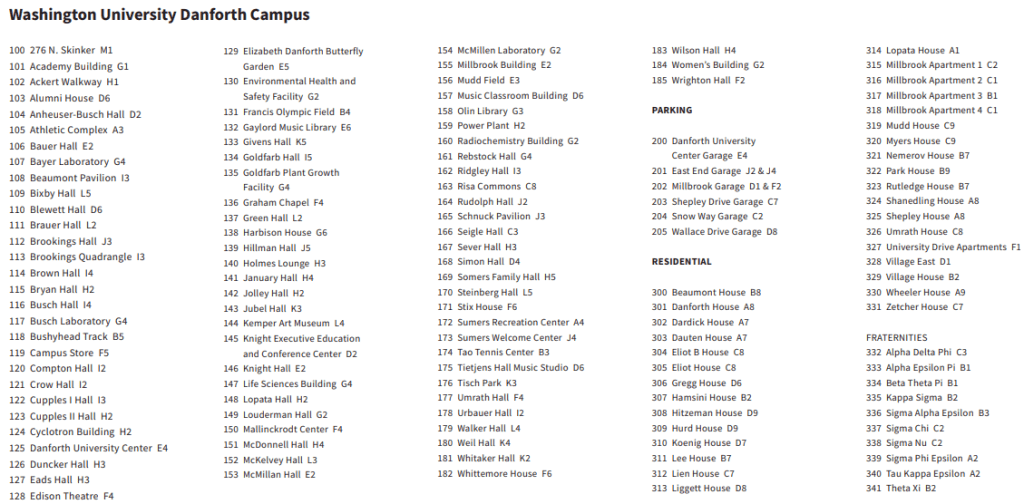
GPS Coordinates
N/A
Percent Concrete
N/A
Distance to Buildings
| Year | Close Building #1 | Close Building #2 | Close Building #3 |
|---|---|---|---|
| 2020 | McMillan Hall, 24.10 m | Wrighton Hall, 34.45 m | Women’s Building, 62.08 m |
Distance to Other Species
| Year | Close Species #1 | Close Species # 2 | Close Species # 3 |
|---|---|---|---|
| 2020 | Common Hackberry, 5.86 m | Japanese Lilac Tee, 6.98 m | Elm Hybrid, 10.40 m |
Standard Measurements
| Year | Height (m) | DBH (cm) | Crown Diameter N-S (m) | Crown Diameter E-W (m) | Average Crown Diameter (m) |
|---|---|---|---|---|---|
| 2020 | 13.8386 | 26.9 | 11.54 | 12.34 | 11.94 |
| 2023 | 15.9 | 34 | 17.7 | 15.5 | 16.6 |
Nests and Pests
| Year | Description |
|---|---|
| 2020 | 1 bagworm Trunk covered in lichen |
Leaf Identification
The American Elm has pointed, ovate-shaped leaves with asymmetrical bases that are 3″ to 5″ long and 1″ to 3″ wide. The leaves have doubly serrated margins and pinnate veins. They are a dark green and turn yellow in the fall.
Twig and Bud Identification
The twig of The American Elm is often slender, smooth (glabrous), and reddish brown. It can have a slightly zig-zag form. The buds are reddish-brown as well with darker edged scales.
Bark Identification
The American Elm has dark gray, furrowed bark. When young, the bark is often described as “spongy.”
Fruit Identification
The fruit of the American Elm are winged seeds (samaras). These samras are broadly elliptic, papery, and “wafer-like.” It is hairy (pubescent) at the margins.
[photo forthcoming]
Flower Identification
The flowers of the American Elm are vase-shaped and in clusters. The “vase” part (calyx) can be light green to red and emerge from the leaf axils.
‘Valley Forge’ Identification
The ‘Valley Forge’ cultivar has a much higher resistance to Dutch Elm disease.
Elm ID Tips
- The American Elm has the most asymmetrical base of any elm leaf.
- The only other common elm with a significantly asymmetrical base is the Slippery Elm, which can be distinguished by its entire upper leaf surface being rough, whereas the American Elm may only have a partially rough surface, if not completely smooth. The bark of the American Elm has predictably patterned vertical ridges and furrows, as opposed to the irregular scale-like ridges of the Slippery Elm.
